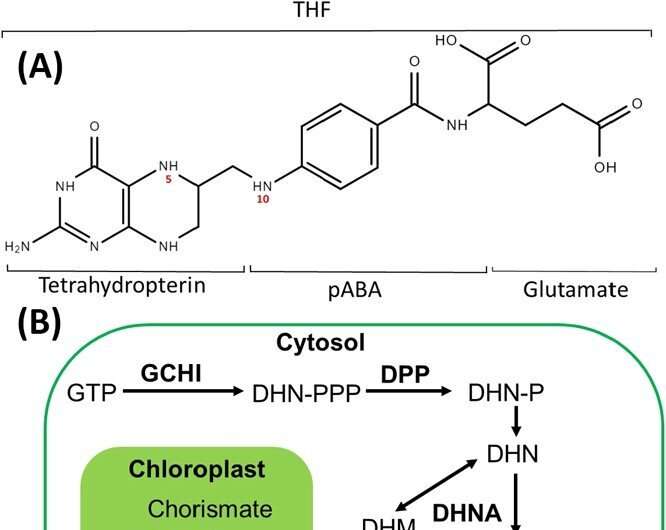This article has been reviewed according to Science X's editorial process and policies. Editors have highlighted the following attributes while ensuring the content's credibility:
fact-checked
peer-reviewed publication
trusted source
proofread
Study reveals reduced γ-glutamyl hydrolase activity as a key to higher folate levels in tomato

Tomato is the sixth most important globally grown crop and is rich in many nutraceuticals, especially the antioxidants lycopene and β-carotene. Vitamin B9 (folate) is an essential vitamin for all organisms. However, despite the high folate content in tomato leaves, the fruits contain only moderate levels.
Current research focuses on biofortifying crops like tomatoes with folate through germplasm diversity and metabolic engineering. Advances have been made by upregulating key enzymes in the folate biosynthesis pathway, but challenges remain due to species-specific responses and the complex interaction of folate with cellular metabolism.
In November 2022, Horticulture Research published a perspective entitled "Reduced γ-glutamyl hydrolase activity likely contributes to high folate levels in Periyakulam-1 tomato."
In this study, two contrasting tomato cultivars, Periyakulam-1 (PKM-1) with high folate content and Arka Vikas (AV) with low folate content, were investigated to understand the molecular basis of folate variation in tomatoes.
Firstly, they examined the folate content of PKM-1 and AV fruits grown in open areas in 1st and 2nd seasons and found that PKM-1 had significantly higher folate levels compared to AV. The progression of ripening in PKM-1 was nearly similar to AV but took longer to transition from the mature green (MG) to the breaker (BR) stage.
PKM-1 fruits also exhibited higher °Brix value and significantly lower ethylene emission. In parallel, the levels of phytohormones salicylic acid, ABA, and jasmonic acid were substantially lower than AV. Next, to investigate whether the higher levels of folate in PKM-1 fruits were caused by an increase in synthetic precursor substances, pABA and pterin contents were detected.
The result showed that pABA was higher in PKM-1 fruits at all ripening stages. By analyzing transcripts and enzyme activities of most genes encoding for folate biosynthesis, it was found that red-ripe (RR) fruits of PKM-1 showed lower γ-glutamyl hydrolase (GGH) enzyme activity and higher polyglutamylation.
In parallel with higher folate, PKM-1 fruits also had higher carotenoid levels, especially lycopene and β-carotene. Further, the metabolic profiles of PKM-1 and AV were analyzed.
Most metabolite levels in PKM-1 were significantly different from AV, including amino acids, amines, organic acids, fatty acids, sugars, and derivatives. The proteome analysis showed upregulation of carotenoid sequestration and folate metabolism-related proteins in PKM-1.
Lastly, they sequenced and compared the whole genome of both cultivars. On the whole genome scale, the PKM-1 genome differed by 0.0423%. And most SNPs were localized in the noncoding regions of the PKM-1 genome, suggesting that polymorphism in promoters of regulatory genes may contribute to the differences between AV and PKM-1.
In conclusion, this study uncovers that the PKM-1 RR fruits have higher folate, carotenoids, and GABA (γ-aminobutyric acid) due to specific genetic traits, with less folate breakdown and more nutrient retention than the Arka Vikas. The metabolome and proteome profiling also divulge the diversity in regulating these three nutraceuticals in PKM-1 fruits.
A key finding is the regulation of GGH activity as a potential target to elevate folate levels in tomato fruits. This study pinpoints genetic targets for biofortification, holding promise for enhancing nutritional content in tomatoes, with implications for healthier diets and agricultural practices.
More information: Kamal Tyagi et al, Reduced γ-glutamyl hydrolase activity likely contributes to high folate levels in Periyakulam-1 tomato, Horticulture Research (2022). DOI: 10.1093/hr/uhac235
Journal information: Horticulture Research
Provided by NanJing Agricultural University


















